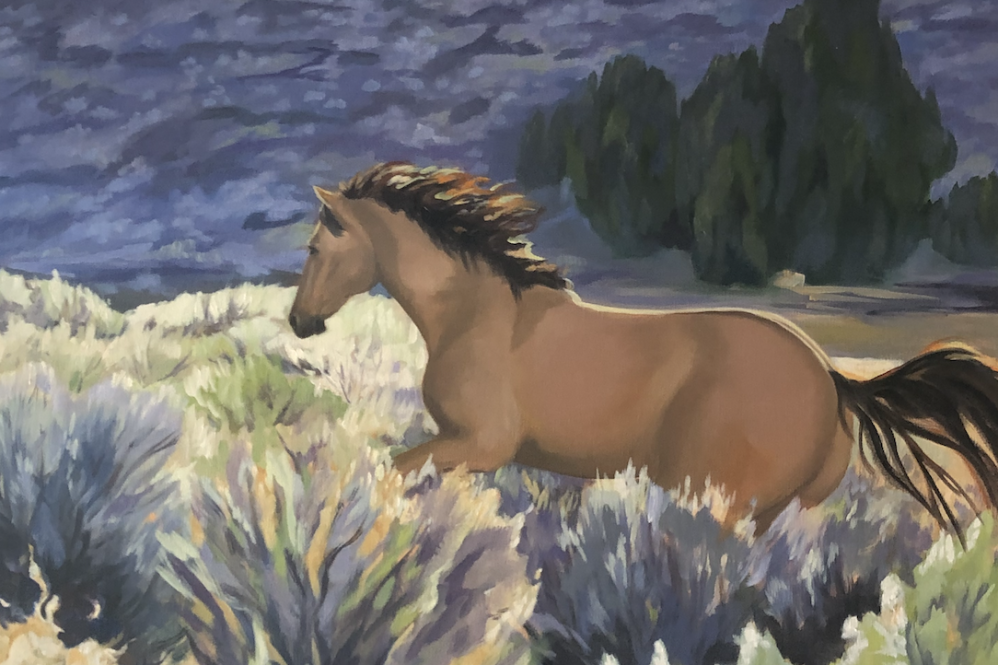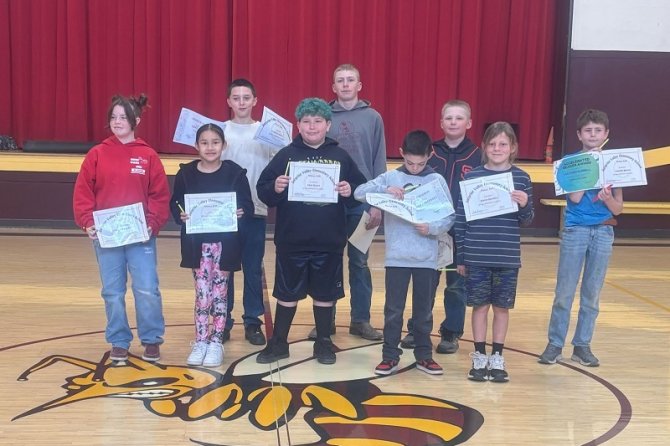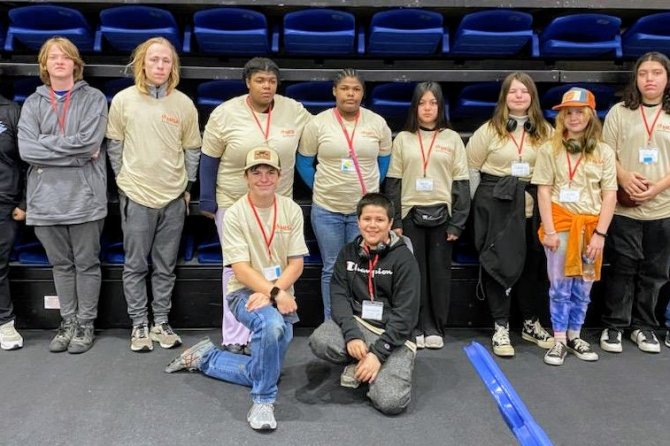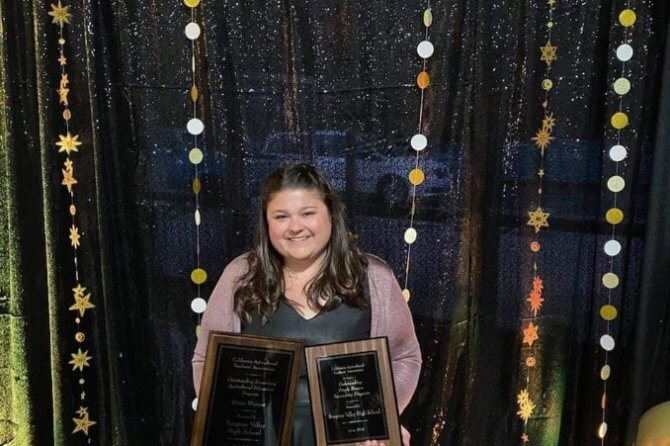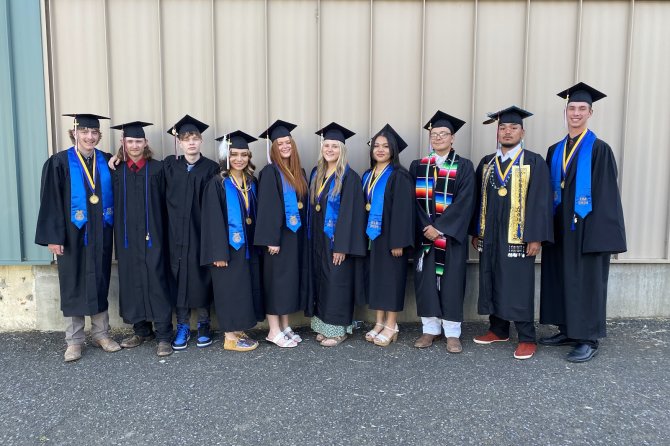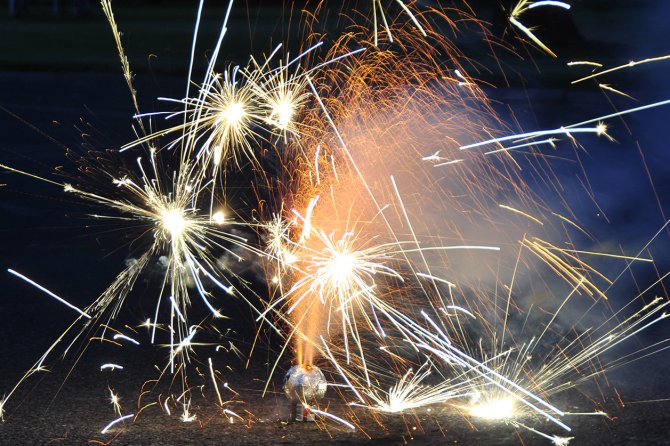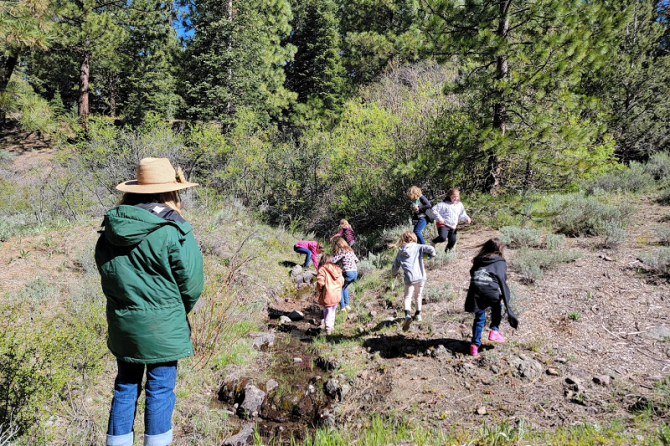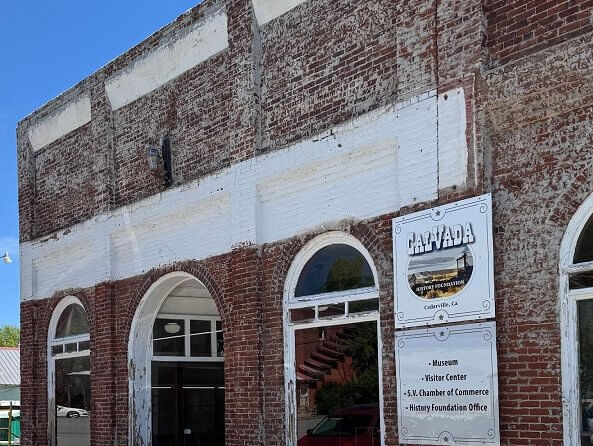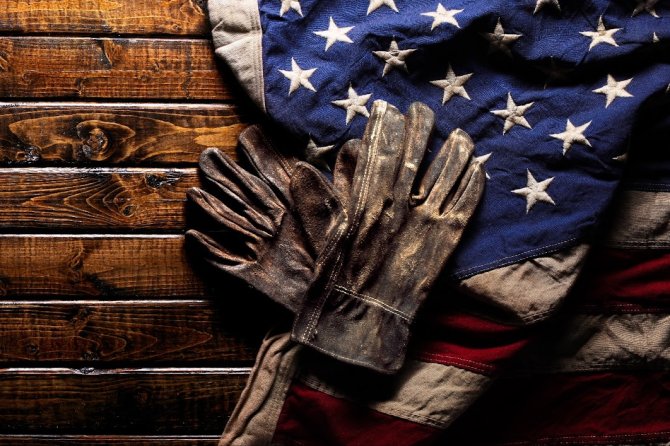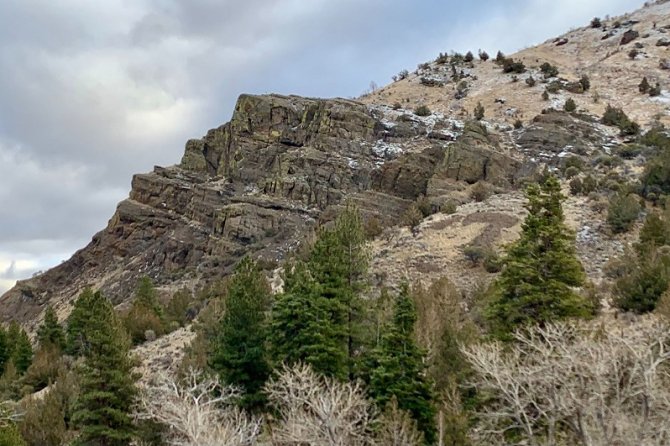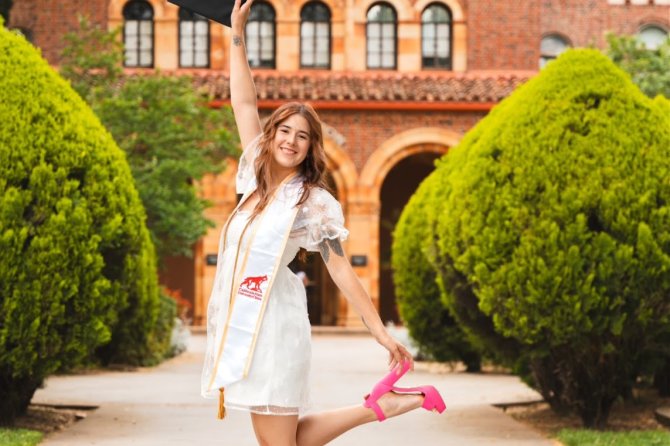Opening at Studio 540
Studio 540, Modoc County’s premier contemporary art
gallery, will present two concurrent exhibitions Helen Valborg: Odyssey and Mary
Dayhoff: The Carter Reservoir Herd, from July 5 to 28, 2024. These exhibitions
celebrate the landscape and wildlife of Surprise Valley, in far northeastern California. There will be a public opening on July 5 from 6 to 8 pm. Gallery hours: Friday – Monday 1-4 pm, or whenever the doors are open. Or by appointment: text Nick at 415-350-0994. Helen Valborg, a resident of Surprise Valley for the past twenty years, passed away on May 9, 2024. Her extraordinary life encompassed two decades living in the wilds of Southern Greece and thirty years teaching anthropology at Ventura College and Feather River College, including extensive fieldwork in Greece, India, and among the Mountain Maidu people of California’s Eastern Sierra Nevada. Valborg authored several books and numerous articles including her ‘Symbol’ series which appeared in Hermes magazine from 1975 to 1989.
Among the earliest works in this exhibition are a series of mixed media pieces from
2005 incorporating papier-maché and paint which represent Valborg’s fascination with the rock art of indigenous Americans. As in many of her later paintings, these works evoke the mysterious connections that exist between humans and animals and between the inanimate and animate worlds, connections which many believe can be accessed through shamanic trance.
Several oil paintings in the exhibition represent the various landscapes that Valborg
loved and explored from the American Southwest to Baja California to Surprise Valley. Valborg was a devoted plein air painter who found a closer connection to her subjects by painting directly in the out-of-doors. The wild horses, descendants of the first Iberian horses to come to the Americas, that live around Valborg’s desert home were the subject of many of her later paintings. In these works, she captured the animals’ inextricable connection to place, and the subtle ways they lived in balance with the harsh, dry environment,
In the final years of her life, Valborg was working on a series of oil paintings delving into the metamorphosis between humans and animals that occurs in the spirit world. Among these are images of a Buryat (Siberian) shaman, an Inuit hunter and his winged “familiar,” and a lone human infant being raised among a litter of newborn wolves. Mary Dayhoff is a Surprise Valley local and volunteer with the non-profit Carter Reservoir Mustangs, Inc. This current exhibition is the artistic outcome of Dayhoff’s extraordinary project to photograph, document, and study the “westside winter ranging” wild mustang horses that are part of the Carter Reservoir Herd Management Area, the same herd that Helen Valborg described in many of her paintings. Dayhoff’s project is an exceptional example of amateur naturalist fieldwork. Through her patient and gentle approach, Dayhoff was able to document the individual horses and their family relationships.
The Carter Reservoir Herd occupies an area extending from the sage and juniper
covered the crest of the Hays Range to the salt flats of Surprise Valley. These horses are a frequent sight to residents and anyone passing through on the many backroads that crisscross the region. Indeed, due to their rapidly expanding numbers, the wild horses who roam freely on the open range have become something of a hazard to passing motorists and several of them have even been struck and killed. No signs warn motorists of free-roaming wild horses.
In this exhibition, Dayhoff presents images of family bands, bachelors, and lone
stallions. In their wild environment, the horses are highly social, with clear hierarchies, friendships, rivalries, and social protocols. As is evident in Dayhoff’s images, the Carter Reservoir Herd horses possess physical characteristics that uniquely distinguish them from other wild American horses. Specifically, they have a pronounced dun coloring as well as primitive markings including leg stripes, dorsal bands, and shoulder capes. DNA testing done on members of the herd showed that these horses carry 100% Spanish- Iberian ancestry without draft horse, American ranch horse, or Cavalry Remount influence, directly linking them to the horses brought to North America by the early Spanish explorers.
The Bureau of Land Management plans to gather the herd using helicopters sometime in 2024 or 2025, removing the vast majority to the Litchfield Wild Horse and Burro Corrals near Susanville and re-releasing a small number into the Carter Reservoir Herd Management Area. For more information about the Carter Reservoir herd and efforts to protect their unique genetic legacy go to: https://www.carterreservoirmustangs.org.

